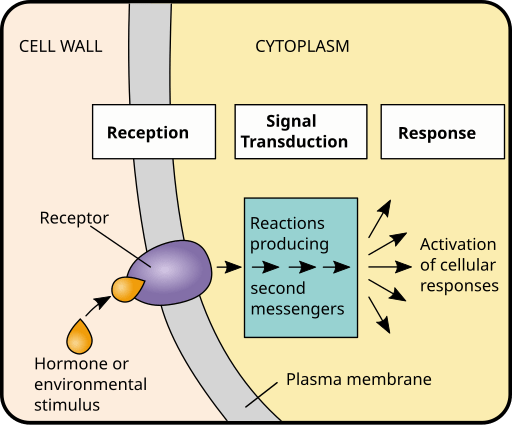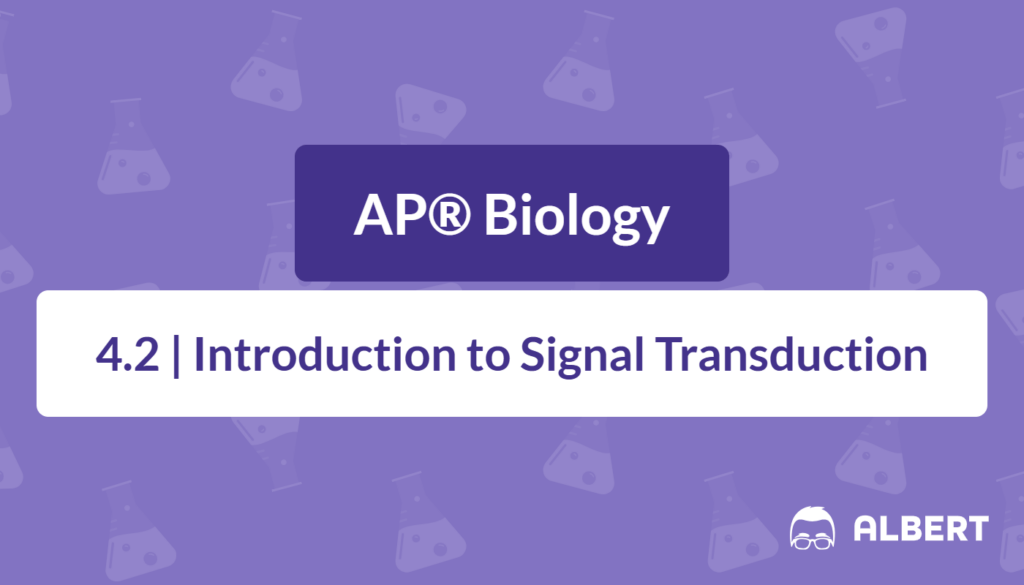What We Review
Introduction
Signal transduction is a fundamental process that allows cells to communicate with one another and respond to their environment. At its core, signal transduction involves the detection of a signal (a chemical messenger or ligand) and the orchestration of an appropriate cellular response. If you’re preparing for the AP® Biology exam, mastering this concept is crucial. In this post, we’ll define signal transduction, explore its key components, and walk through the steps involved, as outlined below.
Definition of Signal Transduction
- What is signal transduction?
- Signal transduction can be defined as the series of events through which a cell converts an extracellular signal into a specific intracellular response.
- It is important in physiology and development—for instance, governing how cells grow, divide, or secrete necessary molecules.
- Overview of signal transduction pathways
- These pathways form a critical link between the reception of the signal at the cell surface (or inside the cell) and the eventual changes that happen inside the cell.
- They ensure that any chemical signal received by a receptor is appropriately translated into a functional response.
Components of a Signal Transduction Pathway
A. Receptors
- Receptor proteins are specialized molecules that bind signaling molecules (ligands).
- G protein-coupled receptors (GPCRs) are a prime example, found in a variety of organisms, and can initiate multiple different cellular responses.
B. Chemical Messengers (Ligands)
- Ligands are molecules such as hormones, neurotransmitters, or growth factors that bind to receptors.
- Ligand-receptor specificity ensures that a particular receptor only binds to its corresponding signal.
C. Second Messengers
- Second messengers (e.g., cyclic AMP, calcium ions) are small molecules or ions that relay signals within the cell.
- Their key role is to amplify and distribute the original signal, greatly increasing the speed and magnitude of the cellular response.
Steps of Signal Transduction

A. Recognition of the Signal
- The first step involves the ligand binding to its specific receptor. The binding event often causes the receptor’s shape to change, an essential trigger for the next step.
B. Signal Transduction Process
- Once the receptor changes shape, intracellular proteins (including G proteins, kinases, or other intermediaries) become activated.
- These activated proteins set off a cascade of molecular events, known as a signaling cascade, carrying the message deeper into the cell.
C. Cellular Response
- Eventually, the effector proteins or molecules carry out the cell’s response, which can include:
- Activation or repression of genes (impacting protein synthesis)
- Changes in cell metabolism or secretion of molecules– Alterations in cell structure or movement
- Because each node in the cascade can activate multiple downstream targets, relatively few signal molecules can produce a large-scale cellular response.
The Role of Protein Modification in Signal Transduction
A. Key Processes in Modifications
- Protein phosphorylation cascades are one of the most common modifications in signal transduction.
- Enzymes called kinases add phosphate groups to proteins, changing their shape and function. This can either enhance or inhibit their activity.
B. Example Pathways Showcasing These Modifications
- The MAP® kinase (mitogen-activated protein kinase) pathway is a classic example, where multiple phosphorylation events ultimately lead to changes in gene expression that regulate cell growth and differentiation.
Summary of Signal Transduction Pathways
- Signal transduction pathways generally include the reception of a signal, the movement of that signal through a cascade (often involving second messengers and protein modifications), and a final cellular response.
- Understanding these pathways is essential in studying how cells adapt and react to their environment, making it a frequent topic on the AP® Biology exam.
Practice Problems and Study Tips
Practice Problems
- Identify the receptor type involved when epinephrine (adrenaline) binds to liver cells to stimulate glycogen breakdown.
- Explain how altering the function of a kinase might affect a signaling cascade.
- Draw a simple diagram of the steps of signal transduction when a ligand binds to a G protein-coupled receptor.
Study Tips
- Try drawing out the steps of unfamiliar signaling pathways to build a mental map of how signals move through a cell.
- Focus on the big picture before drilling into details. Understanding the broad mechanism (reception → transduction → response) first makes it easier to remember specifics.
- Work with classmates or form a study group to discuss signal transduction, which often helps in grasping challenging concepts.
Conclusion
Signal transduction is a cornerstone of cellular communication, impacting everything from gene expression to cell movement. By understanding what signal transduction is, defining its components, and studying the steps of signal transduction, you’ll build a strong foundation for more complex topics in biology. Remember: consistent practice with examples and diagrams will boost your confidence and performance on the AP® Biology exam.
All the best in your studies and exam preparation—mastering signal transduction now will serve you well throughout your biology coursework and beyond!
Sharpen Your Skills for AP® Biology
Are you preparing for the AP® Biology test? We’ve got you covered! Try our review articles designed to help you confidently tackle real-world math problems. You’ll find everything you need to succeed, from quick tips to detailed strategies. Start exploring now!
Need help preparing for your AP® Biology exam?
Albert has hundreds of AP® Biology practice questions, free response, and full-length practice tests to try out.








